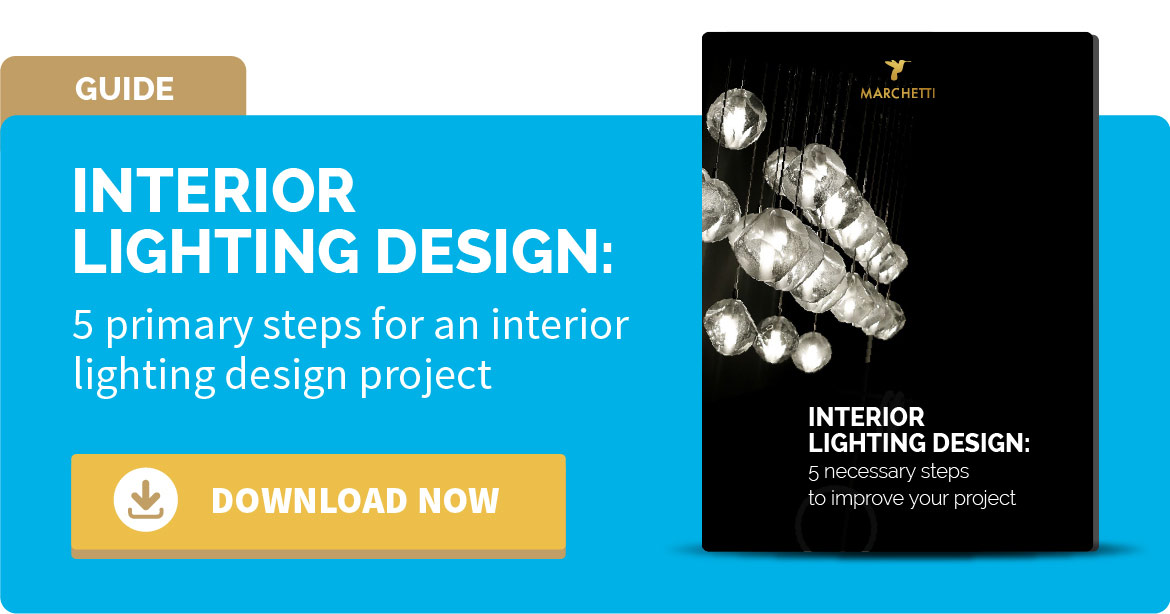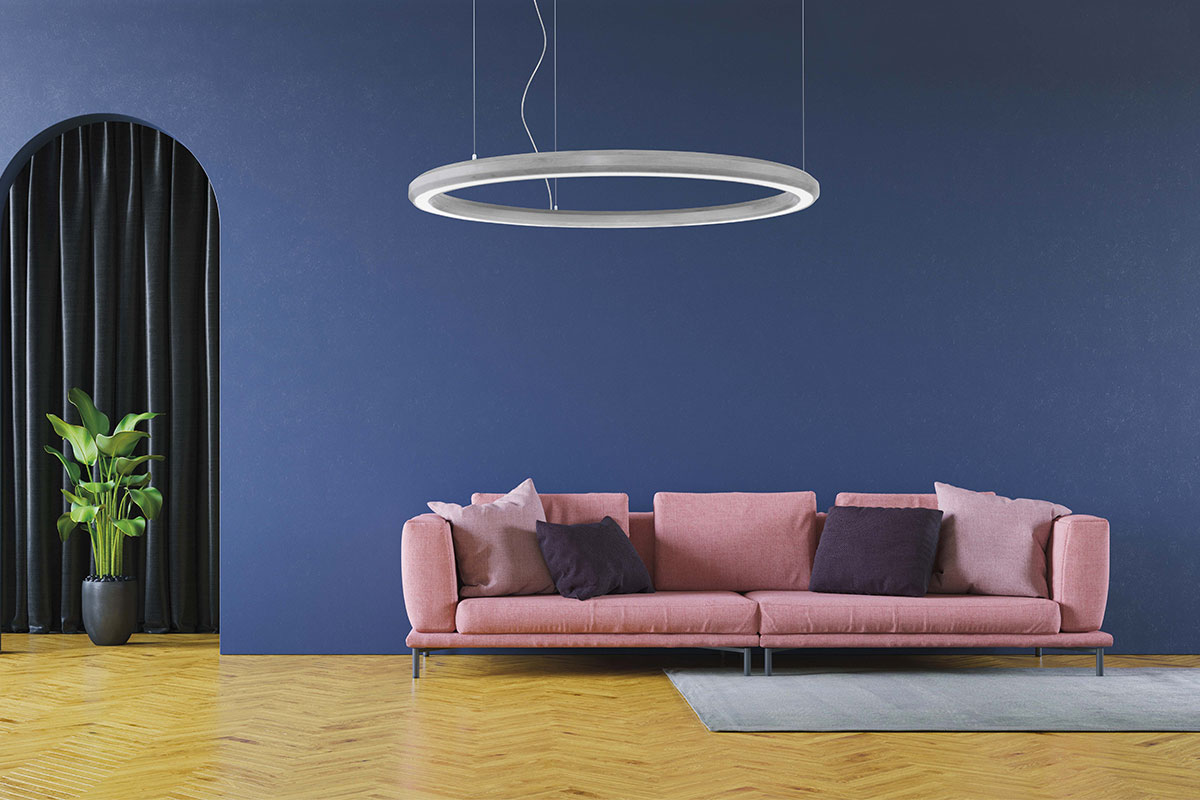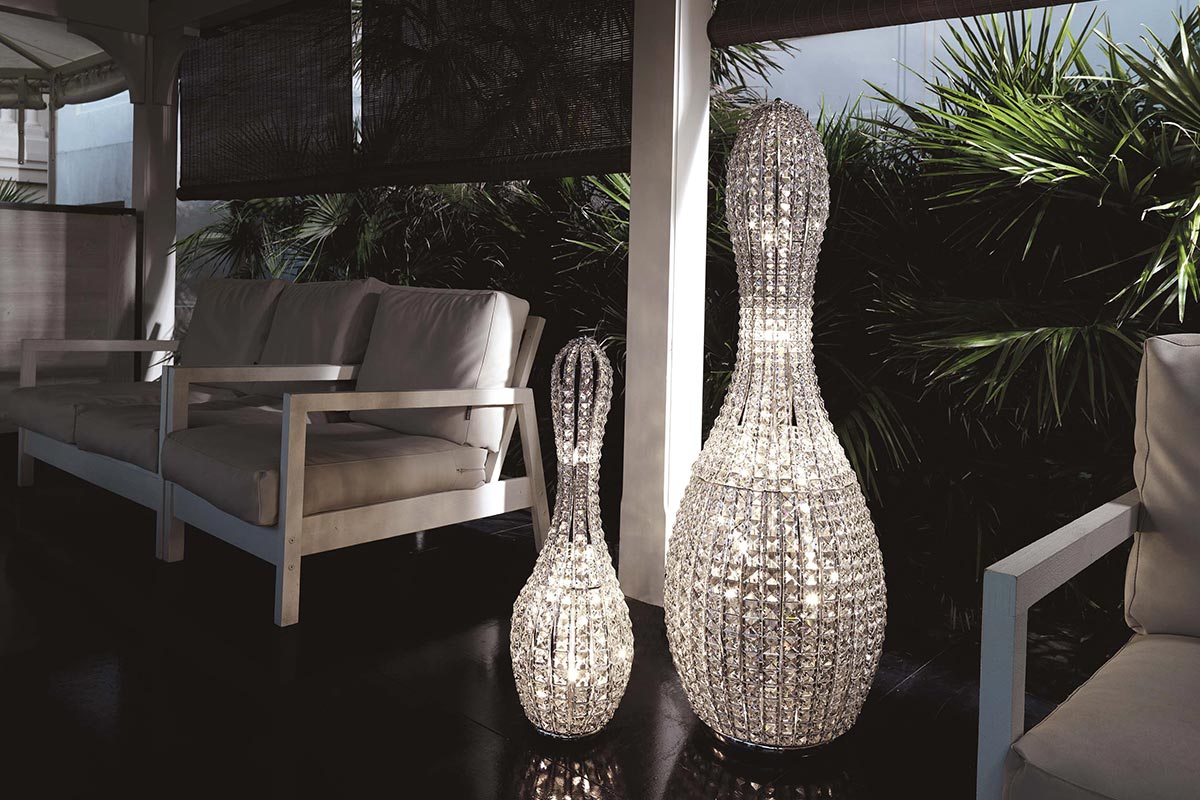Just like with an evocative landscape, the soul of any home environment depends on the light that has been chosen to personalize that space. It goes without saying that a small modification is enough to give a different character to the house.
This immediately makes it clear how fundamental, in your lighting design project, the role that lighting plays in every environment, be it indoor or outdoor.
Precisely for this reason, determining how to bring light to the most important corners of the house is never a simple or banal choice.
In a project where design lighting must be the master, the first thing to do is to determine how the furniture is arranged.
Furthermore, in outdoor projects, lighting is useful both from a functional point of view and from an aesthetic and decorative point of view.
To better prepare this space, it is first necessary to carefully identify the areas to be illuminated, so as to be able to create light points that give value to the entire environment, to create the desired atmosphere.
So let’s see what information you need to know to effectively illuminate both indoor and outdoor environments with design.
Settings for an interior lighting design project
Any indoor environment can be made bright and pleasant, even in the darkest and grayest days of winter.
Having a combination of different types of lighting available to create the ideal atmosphere in any environment is always a winning choice.
Do not forget that it is essential to give the right intensity of light to all the activities planned for each room, whether it is cooking, reading, drawing or even just choosing clothes.
For example, the lighting of the worktop in the kitchen will have a completely different intensity from that designed for the reading area.
Let’s now try to answer some of the frequently asked questions that arise when it comes to an interior lighting project.
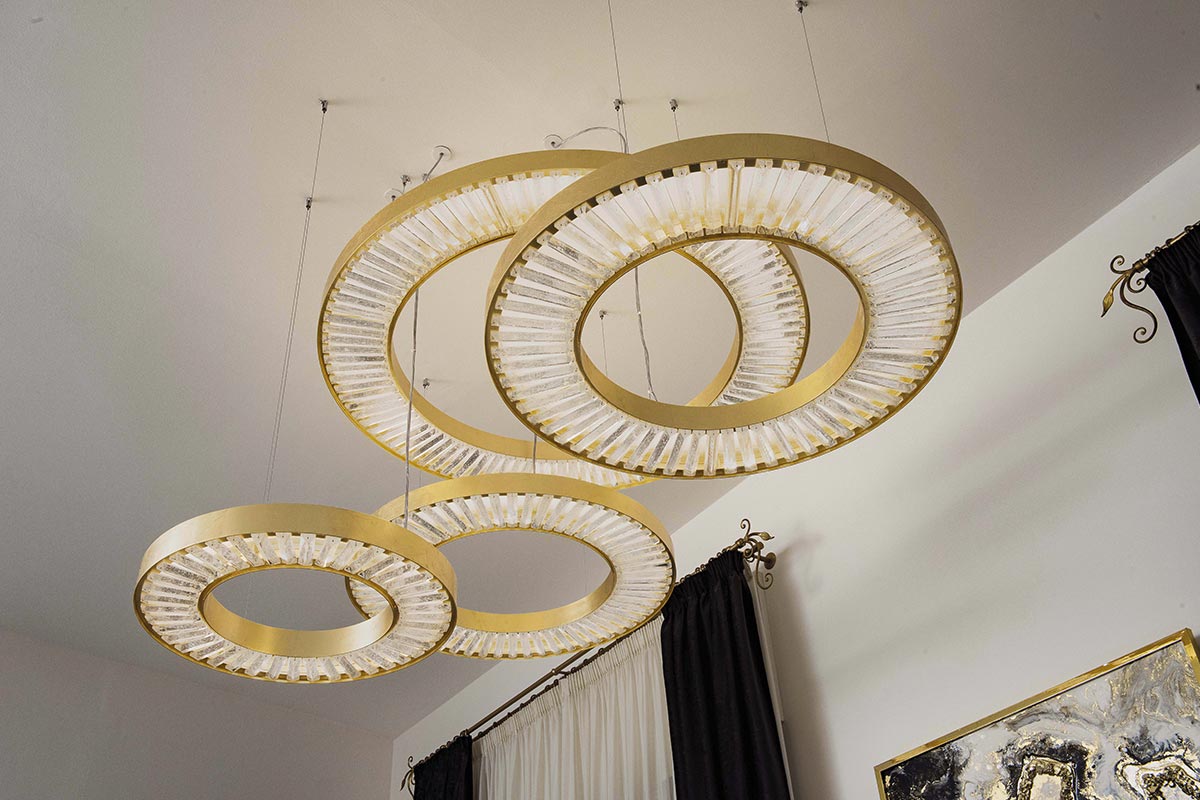
How can you adjust to the darkest areas?
A mistake that you must avoid is to focus your attention only on the areas to be illuminated: identifying also the points to be left strategically more in the shade will allow you to create optical effects that will define the character of each environment.
There are always spaces in a house that do not receive enough natural light or perhaps the design only makes them gloomy: knowing where these darkest areas are is essential for illuminating the interior.
It is simply necessary to understand why those points are more in the shade: is it a lack of light or just a wrong choice of the color of the walls?
Even if the room itself is very bright, your interior lighting design project can collide with a choice of wall colors that tends to darken the spaces.
It will therefore be necessary to orient the project according to the type of light and shadows that the space must have in order to restore an atmosphere suitable for the function for which it was conceived.
It will therefore be useful to understand how to exploit the light and, above all, how to exploit the shadows that natural light creates in every space, so as to recreate the most suitable environment with the help of lamps, through a strategic use of natural light.
Be careful not to fall into the easy trap that leads to the conclusion that just lighting the entire room will give a beautiful appearance to the environment because it is often rather a question of having different light sources.
Trying to stratify the lighting to create a perfect mix of different types of light emanating from different sources may prove to be the winning choice. We suggest opting for different types of shading and using different solutions, more in line with each environment.
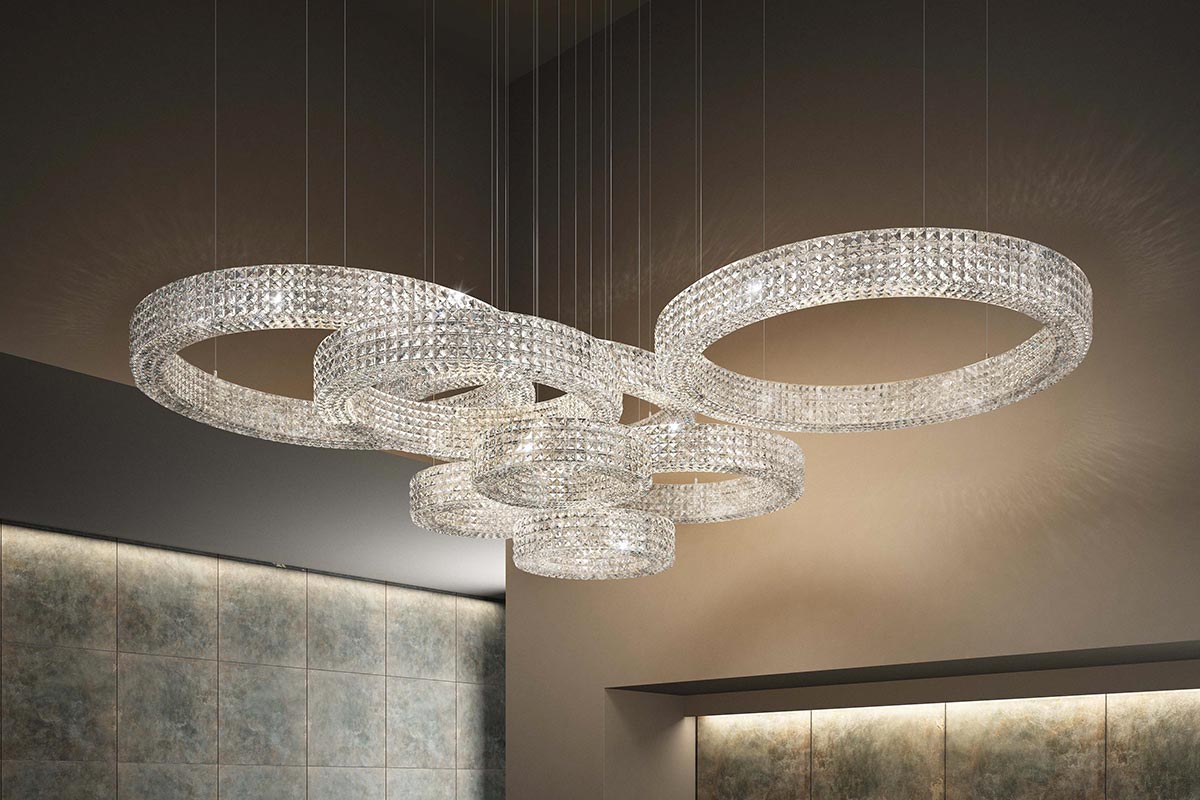
Can artificial light also be useful during the day?
Of course! Although windows are the best source of light during the day, they are not always efficient.
No matter how many light sources each room may have, often all the beautiful natural light that can flood the spaces is filtered by thick, heavy curtains or layered fabric drapes.
If in one or more rooms, despite the windows, there is not enough light (or there are too many dark spots), then you can introduce light points in strategic positions that implement natural daylight.
Can light broaden the perception of the size of a room?
Here too the answer is yes: a room does not have to be large to be considered spacious and airy, since the right amount of natural light combined with strategically placed artificial lighting manages to create an optical effect that changes the perception of the room.
Of course, this perception also depends on how the furniture is arranged, since smaller rooms with few furniture seem much brighter than large rooms but full of furniture which, on the other hand, seem darker.
A good way to keep your room well lit is to have multiple light sources that illuminate all the dark areas you may find. Functional lighting for the activities of the rooms that affect your design lighting project is the way to go if you want to create a wider optical atmosphere.
In any design lighting project it is important to keep in mind the purpose that the light must achieve depending on the environment in which it is placed.
Lighting technology is so prosperous that it offers us a wide variety of products to choose from.
We need to take advantage of this increasingly innovative and intelligent technology to draw attention to all the details that your customers want to highlight in their home and use it to hide any point on which you do not want to attract attention, bringing light only where necessary.
How to adjust the position of the lights
If your lighting project is part of the project of a rough house, still to be finished and furnished, or you are carrying out a project for customers willing to make some changes to the interior furniture, then you can have greater freedom and greater possibilities to experiment with different ideas. of interior lighting design.
Take the time to figure out if there are any rooms facing directly east and / or west.
After answering this question, think about the lifestyle of the client and his eventual family: positioning the furniture and decorating according to their habits (and what pleases those who live in those spaces) is a smart way to choose where and when natural light must be more effective.
The market is teeming with products ready to satisfy all your needs and ideas. Keep track of all the activities that take place in the various rooms of the house to determine which lighting would be ideal for each of them.
Ambient lighting is important but different from functional lighting, such as the one that can be found under a table or wardrobe.
Wall lights and chandeliers are ideal ambient lighting tools for creating a suggestive atmosphere in a room: they work perfectly, for example, in foyers or corridors.
Whatever your choice, it will be perfect only if it complements your client’s way of life and, consequently, if it satisfies all his needs.
Although each interior can enjoy different structural characteristics, the environments that compose it cannot differentiate functionally from other environments, which makes the task less difficult because you can follow guidelines common to all the rooms.
What is the exception and to which you need to pay special attention is the interior design and the specific requests of your client.
So, let’s see what there is to know and what are the general lines to follow to enlighten.
How to light up a living room
An interesting idea to try to illuminate the living room is to shed light in almost every corner of the room but not all, in order to leave some shadow points where light is not needed.
This will give that ambient effect that best suits a living area, precisely because of the very nature with which this space is conceived.
If you have works of art of various kinds, whether it is paintings, an antique or extravagant piece of furniture or even a simple houseplant, it is advisable to use corner lights that point the light beam in that direction.
All designed to emphasize those elements that adorn the room, in such a way as to highlight their value.
The arrangement of these lamps, combined with the set of floor and table lamps positioned equally strategically, is intended to create an engaging and pleasant atmosphere for both the sight and the mood.

How to light up the dining room
The point on which to emphasize in a room such as the dining room is certainly the table, as this is where all the activities are carried out.
To achieve this, you can rely on a selective light installation for that area: elegant and modern chandeliers or a pendant lamp are both ideal solutions, the choice of which depends solely on the tastes of your client and the style that constitutes the character. of the whole interior.
After arranging the table lighting well, you can consider indirect lighting for the rest of the space.
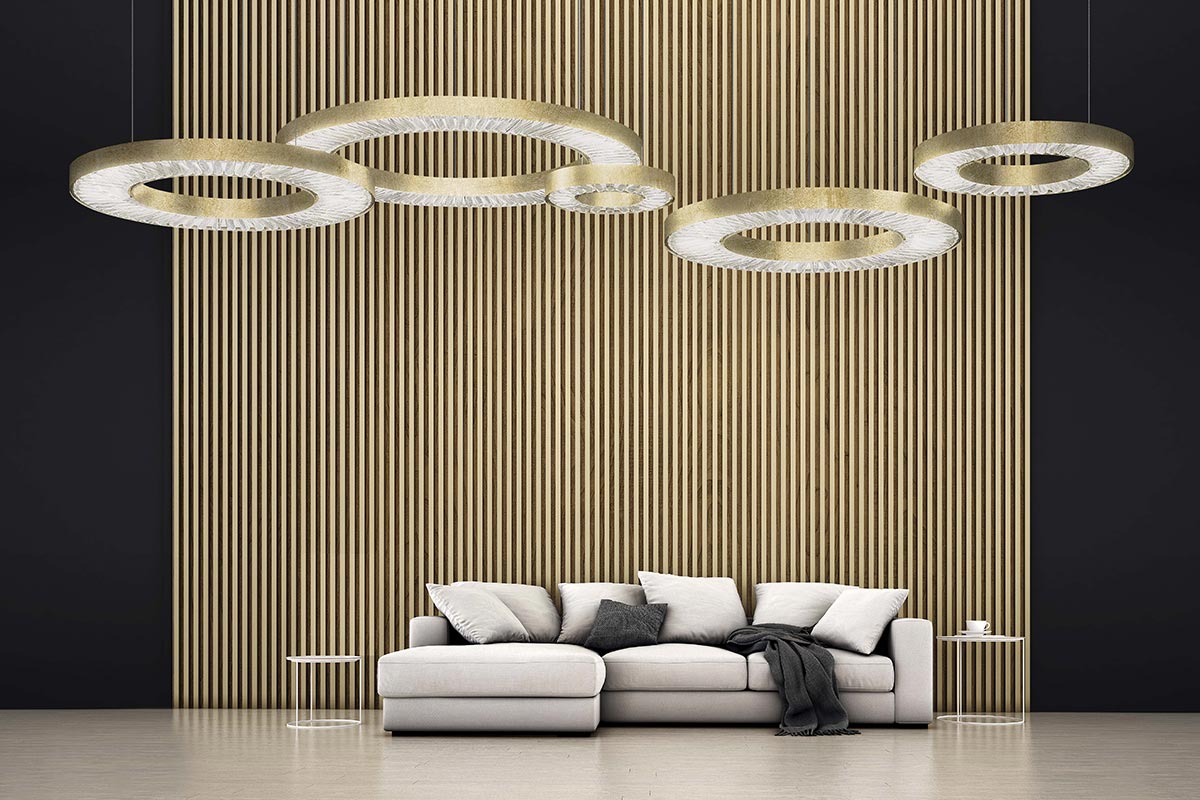
Canopus – Sergio Marchetti Collection
The table already has all the attention of bright light, so you can give the rest of the room a pleasant but not accent light, through small table lamps or a system of several appliques. This will ensure proper lighting for the rest of the dining room.
Not infrequently it is possible to come across a living room including the table usually intended for the dining room: in these cases it will be enough to apply the guidelines described for the living room, adding those suggested for the dining room table.
The mix of both tips will give this room exactly the right lighting it requires.
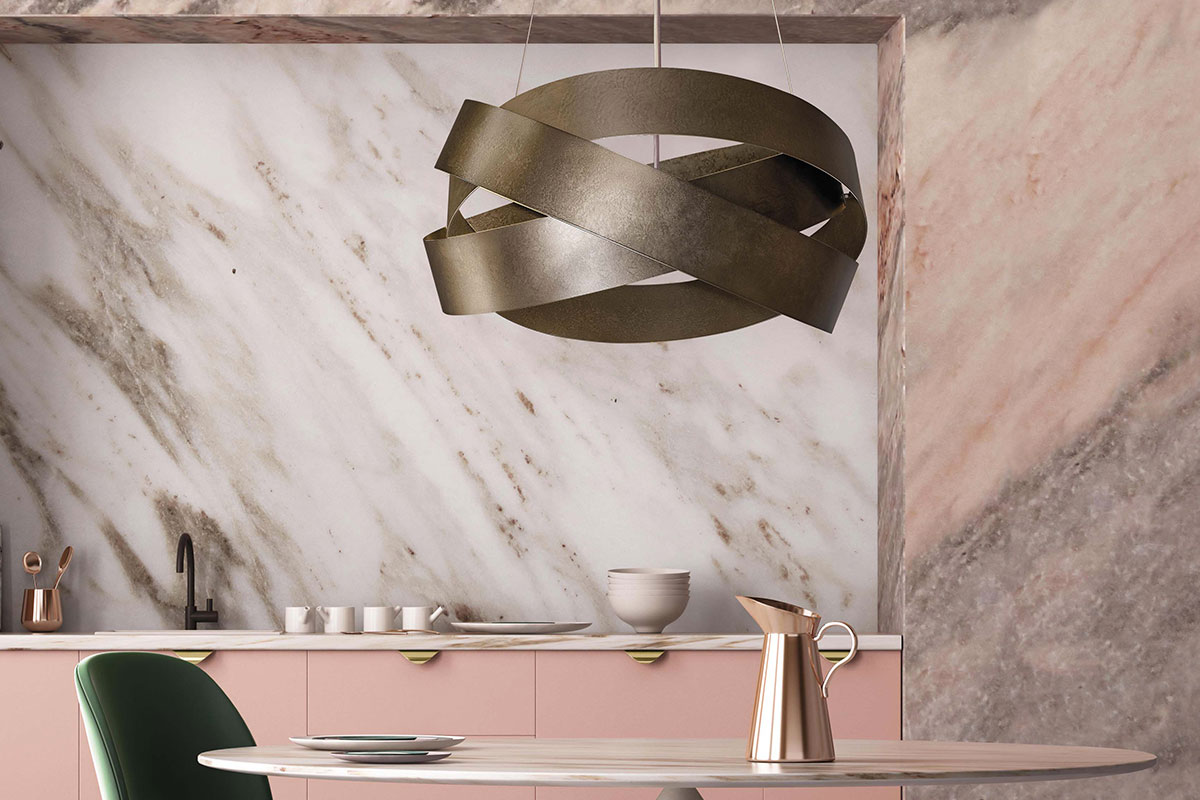
How to light up the kitchen
In the kitchen it is important that the general lighting is bright, because this is where your client will devote himself to his culinary activities and, therefore, will need a specific light that allows him to concentrate and pay attention to what he is doing, without having to strain the view but, on the contrary, to be able to operate comfortably on a clearly visible plane.
Sometimes it may happen that generic lighting is not enough, especially in the presence of large kitchens or in open space: in these cases it will be necessary to integrate generic light with less intense but more specific luminous bodies.
It is important that the latter are able to increase the brightness of the work areas: you can think of something like spotlights integrated into the furniture, table lamps, suspended or directional spotlights.
As for the table, you can rely on the guidelines for the ideal lighting of the dining room, since the table is usually placed in one or the other room.
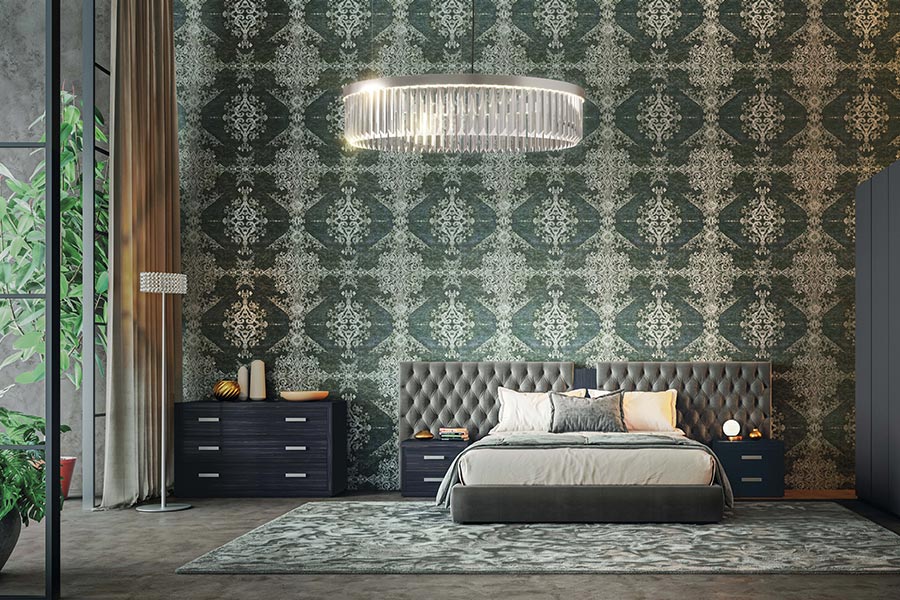
How to light up the bedroom
To best illuminate the bedroom it is necessary to select the most suitable lamps to create a relaxing atmosphere: a reading lamp on the bedside table or wall lamp next to the headboard of the bed represent ideal solutions for all those recreational and relaxation activities intended for this space.
In order to recreate an atmosphere that satisfies the functional needs that this area of the house represents, you can choose recessed luminaires.
If you opt for this type of lighting, be careful to aim the light beam away from the bed, directing it towards the space closest to the point where your client dresses in the morning and undresses in the evening, so that these actions are comfortable and comfortable to the eye.
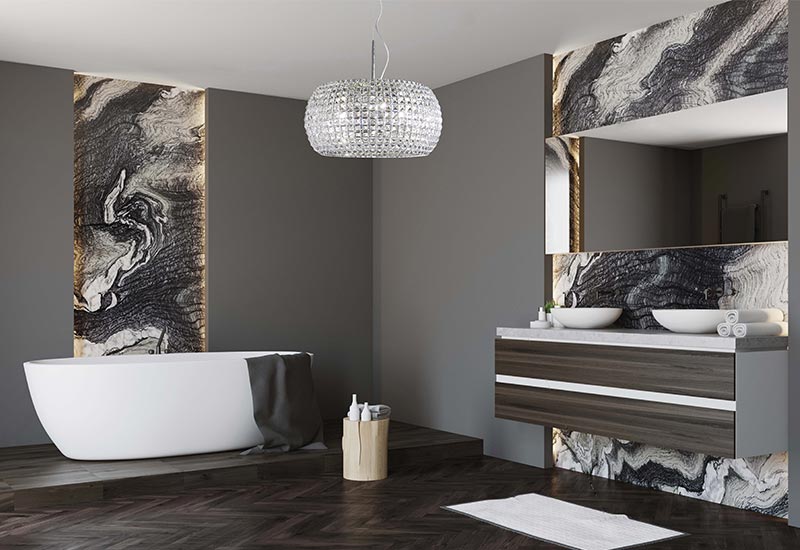
How to light up the bathroom
The bathroom is one of the most functional rooms in the house, as it is dedicated to multiple activities, most of which are carried out in front of the mirror.
For these reasons, the mirror must be the protagonist of your attention: use adjustable spotlights positioned next to the mirror, to provide the right lighting for precision activities such as applying make-up or shaving.
Obviously, generic light is also of great importance.
It is good to have ambient lighting that takes up the entire remaining area of the bathroom, so as to avoid dark corners, especially for when cleaning will take place, given the particular hygienic importance that this room requires.
Having a light where the shower is placed is also very practical: this option is more valid in large bathrooms, where the generic light alone cannot reach the point where the shower and / or bathtub is located.
To illuminate these spaces, ceiling spotlights or wall lights will be useful, but it is important to be careful to position the lights at a height that does not bother the eyes of those who use those spaces and that the voltage is not so intense as to dazzle.
Design lighting for outdoor: the right light for every space
Outdoor lighting is as important as indoor lighting, since it gives life to facades and outdoor spaces just like indoor light does for indoor spaces.
Your project can include outdoor lighting for different functions, such as safety devices, recreate a certain landscape or obtain suggestive chromatic effects.
Whatever the purposes for which they are designed, the external lights can transform the way the internal space and the structure of the house are perceived from the outside.
It is good to point out that outdoor lighting design should not concern only outdoor designers, but it is important in every type of project to understand how outdoor lights can integrate with the structure and architecture of a building.
By understanding the various plays of light and shadow, designers can use contrast and shadows to strategically create stimulating and intriguing spaces.
The main starting point when considering outdoor lighting is to establish what the main objective of the project is.
Do you want to identify the key characteristics, add a character to the surfaces that normally do not stand out or your intent is simply to create a light path that leads to the entrance of the house in a fluid way?
Through conscious lighting, you can highlight the architectural features of a building and at the same time draw attention to some relevant features of the garden, such as plants, trees or decorative objects.
From lighting as a security service to ambient lighting for a perfect outdoor party, always start by identifying how your customer wants to use the outdoor spaces, to consequently find the optimal solutions at the service of each area.
Light up the arbor
Among the modern techniques for covering outdoor spaces there is the installation of the pergola, or a structure made of light materials, without foundations and open both on the external sides and on its upper part.
It is often provided outdoors because it is modest in size and easy to move or remove: its purpose is to create shade by using climbing plants or sheets.
These structures, also known as pergotende, can be equipped with an integrated lighting system that the customer chooses and customizes during the design phase according to both his personal taste and the function to which this installation is intended.
Generally this lighting consists of spotlights or LEDs that you can apply on the rigid parts of the pergola or on the supporting beams.
Alternatively, you can opt for a suspension lamp or a row of lamps but, in general, it is always better to choose the type of lighting depending on the activity to which your customer uses this structure.
If the pergola houses a table for eating meals or a tea table, you will necessarily have to point the light above it. If the pergola is intended for relaxation, for recreational activities or for having a chat with friends, then it is better that you turn to a more soft and pleasant lighting.
Illuminate the boulevard
The solution most frequently adopted for lighting the avenues, consists in the installation of garden lamp posts, which are efficient for following the path towards home and aesthetically they are very pleasant to look at.
The type of lamp post to be adopted is chosen by the customer’s personal taste, but it is possible for you to recommend the design that technically best suits the style of the entire structure, without neglecting the fact that the dimensions of the lamp posts must take into account the width of the area to be illuminated.
The advantage that streetlamps offer is that they offer restful but visible lighting to effectively illuminate the portion of the pathway concerned.
You can distribute the light as you wish by spacing the street lamps: you can adjust how far to install the street lamps according to the visual effect that your customer wants to recreate.
In addition, if chosen carefully, the design of the lamp posts represents a valid piece of furniture for the outdoors, in line with the character of the entire home.
You can find on the market street lamps in wrought iron, iron, plastic and even solar powered, which do not require any type of electrical system and require a minimum of energy.
Illuminate the swimming pool
Often in your outdoor lighting design projects you will find yourself having to illuminate an outdoor area where there is a swimming pool.
This task is never trivial, because it requires accuracy in detail both for its safety function, in which the light is useful for signaling the presence of the pool, and for that of decorating that specific area.
To illuminate the pool you can indulge yourself with the most diverse ideas and solutions, choosing from halogen lamps, floating lights, perimeter LED spotlights, spotlights and underwater projectors and many more.
Among others, the LEDs provide optimal lighting as they are able to illuminate the pool without increasing the costs in the bill. A choice of this type is convenient if your customer wants to light up the pool even in winter.
Illuminate the parking space
Lighting the parking space is as fundamental as lighting the driveway.
It does not matter if the area designed for the parking space is equipped with a cover or not, what matters is that you must necessarily have a lighting system equipped with movement sensors that detect the passage of the car, so as to activate it to illuminate that area automatically.
By setting up such a system, your customer will be satisfied with the intelligent lighting service, not having to bother every time to get out of his vehicle to turn the lights on and off or to park in the dark.
Being able to rely on functional lighting of the parking space will help your client both in maneuvering the machine, facilitating parking, and when he starts walking up to enter the house, so the lights will be useful to illuminate the path up to at the entrance point of the house.
Light up the garden
Lighting the garden is important to create a fascinating atmosphere in this outdoor area, without neglecting their important role in ensuring greater safety.
But which lamps can you choose to properly illuminate your client’s garden? Let’s see some possible solutions that can meet you to define your garden lighting project ad hoc:
- Outdoor wall light. Discreet and effective lamps, are perfectly suited to a small garden, to the perimeter walls of a closed garden, to a balcony or terrace, or to gardens with games and spaces for children.
The advantage of the outdoor wall lights is that they do not take up space and are resistant, which is a fundamental aspect especially in the presence of children or in recreational / outdoor sports activities - Modern outdoor lamps. They are ideal if your client’s garden is enriched with different precious plants or follows a precise theme, giving the right touch of design that enhances its aesthetics even more, giving the visual perception of an even more refined garden
- Streetlights. They are not only useful to illuminate the avenue, as we have seen, but they represent a great classic for garden lighting.
If your customer is not attracted by the nostalgic style of traditional street lamps, or the structure to be illuminated is in a modern style, you can easily find street lamps with various modern style designs to choose from which is suitable for the individual case.
Even more practical, useful and modern are the street lamps with intelligent motion sensor technology, which only turn on when necessary, reducing consumption to a minimum. You can use these lampposts to integrate the static garden lighting, not to be eliminated for its useful safety function - LED lamps. They are practical, ecological and highly efficient with regards to energy saving. The LED lamps prove to be the ideal choice for spaces that require continuous lighting for several hours.
They are also perfect for illuminating parties, dinners and events that your client prefers to carry out outdoors, or to keep the garden illuminated in winter, admiring from the inside of the house the suggestive effect that light is able to give.
As you can see, the solutions are really many. Keeping style and functionality in mind, you will be able to propose the ideal project based on the client’s needs.
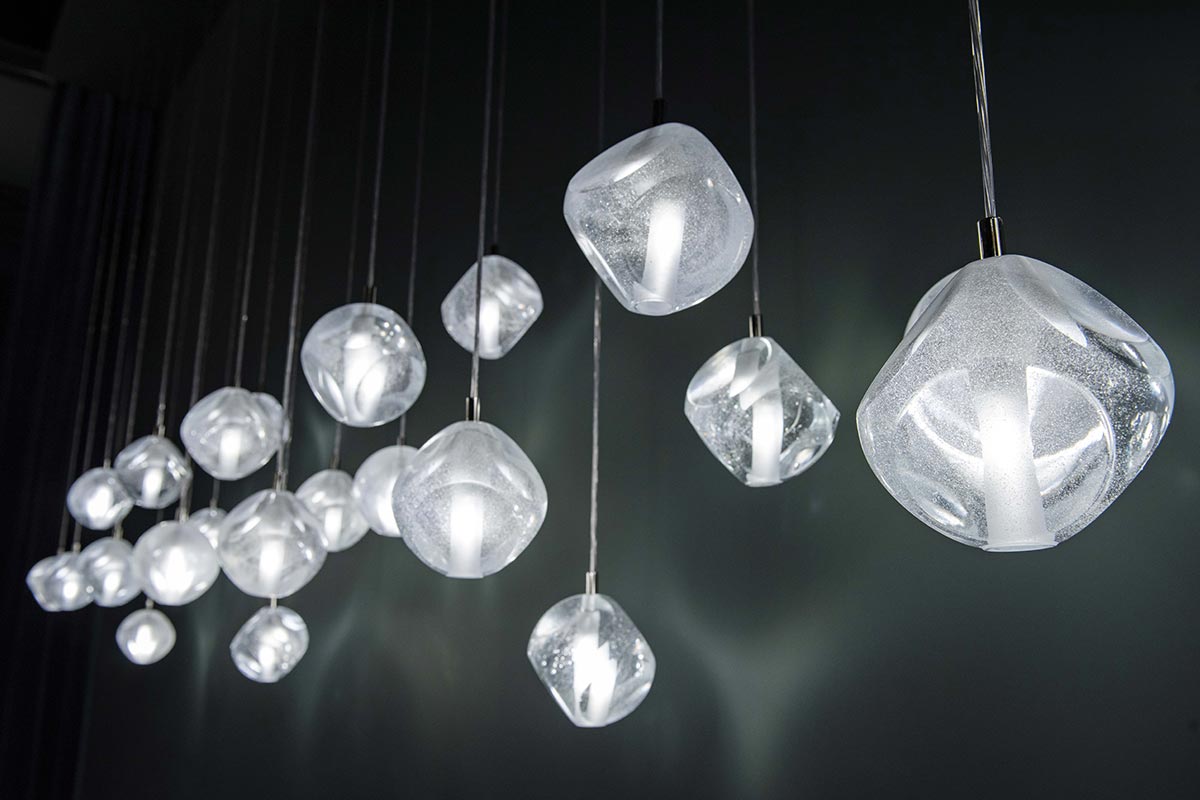
Illuminate a winter garden
A winter garden is an outdoor structure made with iron and glass that allows you to enjoy outdoor spaces with all the comforts and protection of an indoor environment.
Thanks to the glass ceilings and walls, lighting inside will certainly not be a problem during the day.
Nevertheless, adequate lighting will be required during the evening hours that can accompany the routine of those who live inside the structure.
It is therefore a good idea to install solutions suitable for the spaces and the style of the environment such as:
- Floor lamps with a warm and delicate light, are ideal for giving a welcoming atmosphere
- Wall lights, which can highlight architectural details of a room
- Suspensions along the perimeter of the ceiling which will help to illuminate the room without damaging or blocking the view upwards.
Do not forget that this structure is also part of the home and therefore must communicate the style and tastes of those who live there, just like any other room in the house.

Glace – Sergio Marchetti Collection
The ideal lighting for a successful lighting design project
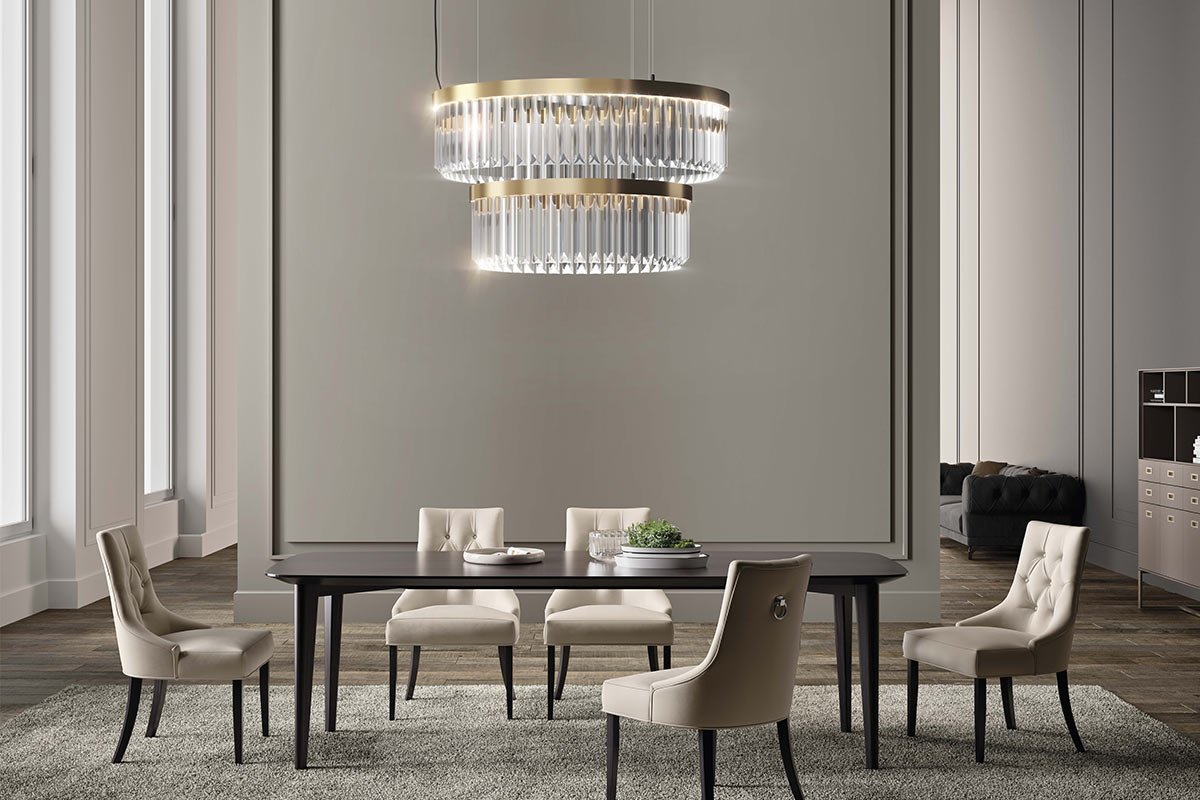
As you have seen from reading this article, the correct design lighting for any indoor and outdoor environment is an operation to be taken lightly, but requires precision, attention and attention to detail.
Of fundamental importance is always the personal taste of your customer that you must put first in your choices and that you must know how to strategically combine with the technical features and with the style that the specific case requires and for which reason your customer has decided to rely on you.
Therefore, in order to create a complete, highly functional and successful lighting project, we suggest you follow the guidelines set out in this treatise, with the recommendation to be able to adapt each point strategically to each specific project on which you get ready to work.
By following what is explained here on everything you need to know for design lighting, the success of your project is guaranteed!

